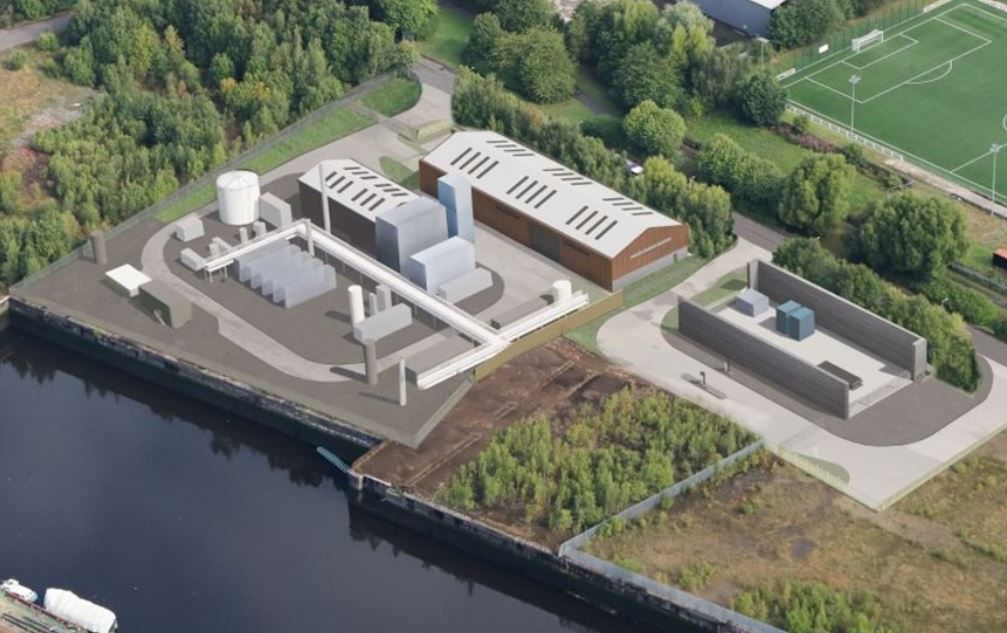Peel NRE, a part of United Kingdom-based Peel L&P, is developing a model new $24 million (£20 million) plant in West Dunbartonshire, Scotland that will flip plastic waste into hydrogen. The company says it’s going to use new tech to “create a neighborhood provide of sustainable hydrogen from non-recycling plastics in every other case destined for landfill, incineration or export overseas,” tales The BBC. The hydrogen will then be utilized to gasoline vehicles, buses, and HGVs. There are plans to assemble a hydrogen refueling station on the plant’s web site.
“The power will sort out the dual drawback of every tackling our draw back plastic whereas creating hydrogen, a sustainable gasoline for future generations,” acknowledged Richard Barker, development director at Peel NRE, in a press launch. “Whereas the principle focus ought to keep on eradicating plastic from society, there are nonetheless end of life plastics that need managing. The £20m plant will play a pivotal place in making the right use of non-recyclable supplies, with the following hydrogen able to help cut back carbon emissions from autos.”
This specific facility makes use of experience from Powerhouse Energy Group, which it calls “Distributed Modular Period, our proprietary superior thermal conversion experience, which we make use of to supply electrical vitality and hydrogen from waste plastics.”
Powerhouse Energy Group outlined the way in which it really works:
“DMG is the reality is a sub-stoichiometric, endothermic gasification course of. Whereby an enormous amount of heat is utilized to the waste plastics. This causes them to interrupt down into their constituent molecules, and via a set of endothermic chemical reactions, flip into energy-rich syngas.”
It well-known that “a typical plant will course of roughly 40 tonnes of waste plastic per day and produce as a lot as 2 tonnes (2000kgs) of hydrogen within the equivalent interval. This equates to roughly 50 kg of H2 for every tonne of feedstock.”
This raises the question: What occurred to the alternative 38 tonnes? Proper right here, we now have now to look as soon as extra at what syngas actually is product of and the way in which you flip it into hydrogen. Syngas is a mix of carbon monoxide and hydrogen, usually created from methane in pure gas by the use of steam reforming as a step throughout the approach of manufacturing hydrogen for ammonia manufacturing. In chemical notation:
CH4 + H2O → CO + 3H2
To separate the hydrogen from the CO, you add additional steam and get, guess what, carbon dioxide.
CO + H2O → CO2 + H2
OK then, what happens to the carbon dioxide (CO2)? In a single different hydrocarbon to hydrogen problem we now have now talked about—the Quest problem in Alberta—the CO2 is piped away and sequestered underground. That was the whole degree of the problem, the definition of “blue” hydrogen.
Proper right here, they don’t pretty say, nonetheless do bear in mind that “DMG facilities is likely to be constructed ready to include Carbon Seize for utilization or storage.” Since they don’t level out this glorious attribute, I believe they’re merely venting the CO2 into the ambiance.
Plastic is principally a secure fossil gasoline and that is what this plant is working on. They’re using pyrolysis, or heating plastic to terribly extreme temperatures to make the syngas, which they’re then turning into hydrogen and CO2. The aim of all of it, as we now have now acknowledged about chemical recycling sooner than, is to make plastic waste disappear in a feel-good prepare, which turning 40 tons of waste into 2 tons of hydrogen plus a whole lot of CO2 primarily is.
I reached out to hydrogen expert Paul Martin of the Hydrogen Science Coalition for his concepts, asking: “They get 2 tonnes of hydrogen out of 40 tonnes of plastic. That seems awfully inefficient, and what happens to the alternative 38 tonnes? Is that this all a rip-off?” He tells Treehugger:
“Certain, it’s a rip-off. You gasify plastic to make syngas, and dump the CO2 to the ambiance. Plastic is a fossil gasoline as is any gasoline derived from it or from its energy content material materials, and waste plastic is certainly and utterly sequestered merely by burying it.” He moreover instructed Treehugger that the residue, the ash, generally is a drawback. “Any quantity of F, Cl, or Br throughout the feed plastic (from fluoropolymers, PVC or brominated fireside retardants) will end up making nastiness whether or not or not you burn it or pyrolyze or gasify it.”
That’s the concern with this course of is that it is no completely completely different than outdated fashion recycling: It is all designed to make us be pleased with looking for disposable plastic packaging. They can’t bury it anymore, they can’t ship it to China anymore, and customary incineration is simply too obvious. Now they’re going to make it go poof proper right into a cloud of CO2 and a squirt of hydrogen and everybody appears to be happy.
Nonetheless in the long run, realistically, the one technique to make plastic waste disappear is to stop producing it throughout the first place. Each factor else is solely smoke and mirrors.
